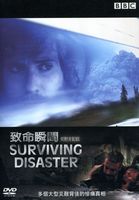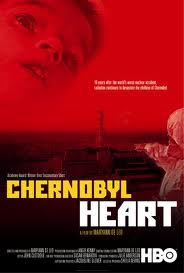Environmental Science Movies
A huge variety of commercial movies, documentaries, and other videos are available to supplement the environmental science curriculum. Each of the movies listed below I have either shown entirely, taken clips from, or given as a homework assignment.
Page 1
Environmental Ethics | Nature of Science | Populations and Species Interactions | Ecosystems
Page 2
Human Population | Food and Agriculture | Environmental Health
Page 3
Air Pollution | Climate Change | Water Pollution | Waste
Page 4
Fossil Fuels | Nuclear Energy | Renewable Energy
Fossil Fuels
30 Days - Working in a Coal Mine
Resources: Student worksheet
 |
Length: 42 minutes
Description: This is the first episode from season 3 of Morgan Spurlock's documentary series on FX. Originally from the hills of West Virginia, Morgan has a close connection to the coal industry, and decides to spend 30 days living and working with the miners of the Double Bonus Coal Company. Students will gain insight into the dangers of underground mining, health risks faced by the long-time workers, and specific techniques used to try to manage the danger. Morgan is also taken on a brief tour of a surface mining operation, and is able to witness a mountaintop explosion while learning about the environmental hazards of this practice.
Lessons Learned
- Underground coal miners are well paid, upwards of $65,000 a year with only a high school education.
- The presence of dust and the inability to work with a respirator make Black Lung disease nearly inevitable.
- The majority of coal is actually obtained through surface mining.
How to Get
Dead Ahead: The Exxon Valdez Disaster
Resources: Student worksheet
 |
Length: 90 minutes
Description: The Exxon Valdez disaster was the worst oil spill to ever occur in the United States at the time. A supertanker ran aground a short distance away from the Valdez oil port, as it steered away from standard shipping lanes to avoid sea ice. The scope of the disaster was compounded by multiple factors: the relative distance away from supplies, the lack of preparedness of Exxon and ALYESKA, and the unwillingness of both the Alaska state environmental protection bureau and the Federal Government to step in and manage the spill cleanup efforts. This movie is a reenactment of the spill and its cleanup, including a good deal of authentic footage.
Lessons Learned
- Federal and state oversight of the oil shipping industry was limited during the President Bush administration.
- The Alaska pipeline and Valdez terminal are controlled by a consortium of oil companies.
- The main strategies of oil cleanup are boom, burn off, and chemical dispersants.
How to Get
Modern Marvels: Oil Tankers
Resources: Student worksheet
 |
Length: 50 minutes
Description: A fascinating, in-depth look at the history of the modern supertanker. Oil became an especially valuable resource with the advent of the combustion engine in the early 20th century. This demand, combined with political instability surrounding the Suez Canal, created the need for ships that can transport millions and millions of barrels of oil. This episode of Modern Marvels looks at the engineering behind this ships, as well as lessons learned from major disasters, including the Exxon Valdez oil spill of 1989.
Lessons Learned
- Supertankers are actually made of several smaller tanks to minimize sloshing of oil during transport.
- Many tankers are specifically designed to fit the maximum capacity of the Panama and Suez Canal.
- Modern supertankers must be built with a double-hull design as a result of the Exxon Valdez disaster.
How to Get
Nuclear Energy
The China Syndrome
Resources: Student worksheet
 |
Length: 122 minutes
Description: This is a fictional film about a television news reporter who, by chance, is present for a near-meltdown at a nuclear power plant. The reporter and her cameraman undertake an investigation, unearthing a series of safety coverups and other structural problems with the plant as it prepares to restart despite protests by local activists. The film was released on March 16, 1979, only 12 days before the Three Mile Island nuclear accident near Harrisburg, Pennsylvania.
Lessons Learned
- The China Syndrome is a fictional nuclear accident where the core overheats and melts through the Earth.
- A SCRAM is an emergency shutdown of a nuclear reactor through the use of control rods.
- Pressurized water reactors (PWRs) must have ample supply of coolant, or a meltdown will occur.
How to Get
The Eyes of Nye 'Nuclear Energy'
Resources: Student worksheet
 |
Length: 25 minutes
Description: This episode from the Eyes of Nye series takes a skeptical look at nuclear fission as a source of electricity. Bill Nye explains the principles behind the nuclear fission chain reaction and how the resulting energy is controlled and harnessed within a reactor. Much of the episode is spent wrestling with the problem of nuclear waste and how to dispose of it, including such ideas as mountain burial, dry-cask storage, and even launching it into outer space.
Lessons Learned
- Uranium-235 atoms are hit with neutrons, stimulating an exothermic fission chain reaction.
- Currently, nuclear waste is stored in concrete and steel dry casks on the grounds of the reactor.
- All nuclear material has a half-life of decay, although this could be thousands of years.
How to Get
Surviving Disaster: Chernobyl
Resources: Student worksheet
 |
Length: 60 minutes
Description: A movie from the BBC television network that attempts to re-enact the events leading up to the Chernobyl meltdown and the subsequent efforts to contain the radiation. The story is told from the perspective of Valery Legasov, a high-ranking Soviet official who was placed in charge of the investigation. Much of the initial blame fell on the plant operators. Legasov committed suicide two years after the initial disaster, wracked with guilt over his role in covering up the true cause of the disaster: a flaw in the reactor design.
Lessons Learned
- The RBMK-1000 type reactor had several design flaws in the control rods and containment building.
- The burning nuclear core of Chernobyl was eventually controlled through the use of dropped sand bags.
- Soviet politics kept reactor design flaws from entering public knowledge, possibly creating this disaster.
How to Get
- Not for sale
- Youtube
Chernobyl Heart
Resources: N/A
 |
Length: 40 minutes
Description: A 2003 documentary made by Maryann DeLeo for Chernobyl Children's Project International observing the effects of the 1986 Chernobyl meltdown on the surrounding population. Included are children with severe birth defects at orphanages, school children being tested for cesium-137 contamination, and an open heart surgery that saves the lives of children born with a congenital heart defect nicknamed "Chernobyl Heart." This documentary was shown to the United Nations General Assembly in 2004 in an effort to raise awareness and increase fundraising.
Lessons Learned
- Teratogenic and mutagenics effects of the radiation are most apparent in children born after April 1986.
- Laws forbid young children from entering the Chernobyl exclusion zone, although a few live there.
- Hospitals in Ukraine and Belarus are ill equipped to deal with the prevalence of cancers and birth defects.
How to Get
- Not for sale
- Youtube
Trinity and Beyond: The Atomic Bomb Movie
Resources: N/A
 |
Length: 134 minutes
Description: This documentary gives the complete story behind the development, testing, and eventual dropping of the atomic bomb. Specific segments that would appeal to the environmental science classroom center around Operation Crossroads. A fleet of retired and captured naval ships was placed in the ocean near the Marshall Islands, and two atomic bombs were dropped on them. Also see the explosion and aftermath of Castle Bravo, the last atmospheric nuclear test ever conducted by the United States.
Lessons Learned
- To get a baseline measurement for the explosive force of the bombs, 100 tons of TNT were exploded..
- Two bombs equivalent in strength to those at Hiroshima and Nagasaki were dropped at Bikini Atoll.
- Castle Bravo, at 15 megatons, was far more powerful than expected, contaminating several other islands.
How to Get
- Not for sale
- Youtube
Renewable Energy
Modern Marvels: Hoover Dam
Resources: Student worksheet
 |
Length: 42 minutes
Description: The Hoover Dam was groundbreaking when it was first constructed. The United States had never attempted to build a structure of that scale before. The dam was built primarily to control yearly flooding of the Colorado River, but it also contains hydroelectric generators which supply some of the electricity to Las Vegas. This episode of Modern Marvels documents the history of the dam, its construction, and its design.
Lessons Learned
- The Hoover Dam eliminated the seasonal flooding of the Colorado river, providing a more reliable water supply.
- A total of 17 hydroelectric generators are installed on the dam.
- The estuary of the Colorado river has shrunk due to the decreased flow of water.
How to Get
